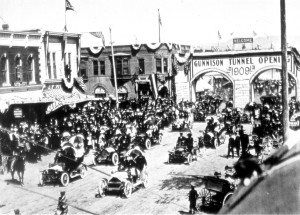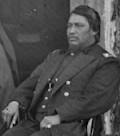Inauguration Day is a good time to think about Presidents of the United States. Have you ever met a President in person?
Would you be surprised to know that Chipeta and Ouray had personal meetings with several U.S. Presidents?
During his first trip to Washington City in April 1863, Ouray and a delegation of Utes met with President Abraham Lincoln. At that time Lincoln presented Ouray with a black cane, his standard gift to the leader of each Indian delegation he met.
On February 5, 1868, Ouray and another delegation of chiefs met with President Andrew Johnson. The President gave them a tour of the White House.
In January 1872, Ouray and a delegation of Ute chiefs were received at the White House by President and Mrs. Ulysses S. Grant .
The following year, Ouray and another delegation of Utes were back in the nation’s capital. During this trip the Utes agreed to give up their claim to the San Juan Mountains. Ouray and the delegation met with President Grant on October 24, 1873.
President William Howard Taft came to Colorado in 1909. On September 23, 1909, he gave a speech in Grand Junction, Colorado, reportedly attended by 12,000 people. Chipeta and a group of Ute chiefs were among the specially invited guests. After the speech, Chipeta and the special guests stepped onto the stage to meet the President. This group of guests would accompany the President on a train to Montrose for the opening of the Gunnison Tunnel. President Taft insisted that Chipeta ride with him to the railroad station in his open touring car.
Photo courtesy Denver Public Library, Western History Collection.
Sources: Indian Agent Expense Records, National Archives; Washington Evening Star, October 24, 1873; Bits of Colorado History, Al Look (Golden Bell Press, 1977)

 If you have seen the wonderful movie
If you have seen the wonderful movie  Ely Samuel Parker
Ely Samuel Parker 





